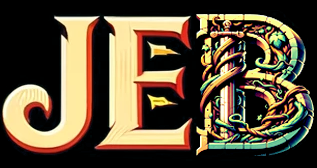
How We Got Here
In my homebrew campaign, Falling Stars, the players stumbled upon a circus in the Feywild. This detour was an unforeseen consequence of their actions (surprise, surprise). Fortunately, I had some time to acquire The Wild Beyond the Witchlight adventure and utilized its content to begin constructing the setting.
In the original adventure, the circus features a dragonfly ride managed by a treant. To integrate this into my campaign, I modified the character to a treant inspired by Bob Ross, thanks to an amazing “Bob Moss” STL file. This treant found the rides mundane and sought to paint a more thrilling adventure. Eventually, the party realized they could enter the painting to influence its outcome.
It’s also crucial to note that we employed a wild magic environment. A d4 was rolled after each spell cast by the party, and we referenced a humorous Wild Magic Surge Table whenever the result was a 4.
The Game Setup and Mechanics
Upon arrival, the players were presented with a symmetrical, curved path (original image here). I discovered the map on Reddit. Initially, it didn’t suit a jousting map, but inspiration struck. How could I make these game mechanics more engaging?
Thus, the party was split into two teams, based randomly on their seating around the table. They would compete in brackets, adhering to the following mechanics:
- Roll Nature to determine how effectively you mount the dragonfly.
- Roll Acrobatics to navigate the curve proficiently.
- Roll Athletics to gauge the impact of your hit.
The brackets and cumulative rolls added depth to the game, generating tension with each roll-off. The victor wasn’t immediately apparent, creating more tension, and the brackets mixed it up as to who went against who.
When Players Do What Players Do
We also printed four Giant Dragonflies using this STL file. The players were eager to name them, attributing luck to the ones they rode and relishing the choice of mount each round.
However, the highlight emerged from a simple yet significant question: “Can we use spells?”
My decision considered several factors:
- We had just entered the Feywild, so the players had minimal exposure to wild magic. This presented an ideal, low-risk introduction.
- The chaotic nature of the Feywild suggested a lack of rules, fitting the scenario perfectly.
- The players’ low level meant most spells would (hopefully) not break the game, but I was willing to take the risk.
Reacting to Actions and Consequences
Here’s what transpired with spell usage:
- Our cleric immediately cast bless on their team. At this level, it merely added a d4, and the opposing team seemed unfazed. In fact, they chose not to cast spells at all, possibly out of a sense of ethics or pride.
- Our sorcerer boldly cast gust. As it originated from a racing dragonfly, they needed to make a Dexterity check, which they failed. This misdirected gust targeted the barbarian, who had been eliminated in the first round, causing an entertaining diversion.
- Wild magic ensued! A roll of 49 resulted in the caster being unable to speak, emitting pink bubbles instead. As a creative touch, I decided the bubbles would expand as they ascended.
- Our gunslinger, tasked with starting the races via gunshot, grew curious. In the next round, they targeted a large bubble above the spellcasting team. This introduced another dynamic mechanic: the opposing team had to make a Dexterity saving throw to avoid being coated in sticky pink goo. The cleric, being the only one who failed, provided excellent role-play opportunities as the de facto team leader.
- The sorcerer attempted another spell! This time they opted for minor illusion to create a wall. Successfully making the Dexterity check, they cast the spell, which led to a Wisdom saving throw by the opponent (the gunslinger). The opponent succeeded, ignoring the potential disadvantage. The sorcerer would go on to lose the round because of this next tomfoolery.
- The cleric borrowed the gun as the gunslinger prepared to compete against the sorcerer. With pink bubbles hovering above both teams, the cleric had an idea. So, despite the unsuccessful attempts to gain an advantage, the cleric tried again. They took aim at a bubble above the opposing team. Given it was their first time handling a gun, an attack roll was required to determine the outcome. A Natural 1 was rolled! We decided that the recoil caused the cleric to mistakenly hit the bubble over their own team. The sorcerer failed the save by 1 point, resulting in the sticky substance landing on the dragonfly’s tail. This mishap created a disadvantage for animal handling, leading to the sorcerer’s loss by a slim margin of 1 point.
Key Takeaways
This session was incredibly memorable for several reasons:
- The added rolls were logical so they fit the roleplaying yet didn’t hinder gameplay.
- Allowing players to navigate a potentially unbalanced system fostered team building and created an unexpected ethical vs. unethical roleplay opportunity.
- Everyone was just focused on fun, so even the bad outcomes added to the joy of it all.
It’s wonderful to have a good group of players, and it’s rewarding when they get a kick out of new mechanics.
